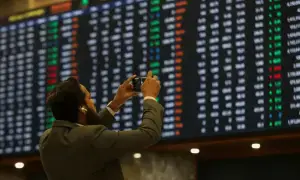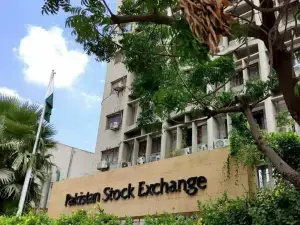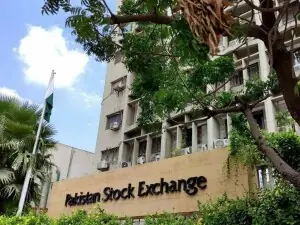The news from the IMF is depressing. In its latest World Economic Outlook released on 8th October, it has shaved its 2013 global growth forecast by 0.3 percentage point to 2.9 percent and 2014 forecast by 0.2 percentage point to 3.6 percent and warned that the outlook could get bleaker if the US political stand-off over finances drags on. "A failure to promptly raise the debt ceiling, leading to a US selective default, could seriously damage the world economy," the Outlook asserted. Moreover, "global growth is still weak, its underlying dynamics are changing and the risks to the forecast remain to the downside." Overall, the IMF left unchanged its GDP growth forecast for the advanced economies at 1.2 percent in 2013 and 2.0 percent in 2014. In the US, growth in the world's largest economy would tick along at 1.6 percent in 2013, picking up to a 2.6 percent pace next year but the projection assumes that the shutdown is short, discretionary public spending is approved and the debt ceiling - which may be reached in mid-October - is raised promptly. Eurozone's recession this year would not be quite so deep. Its economies would contract by 0.4 percent compared to the July forecast of 0.5 percent while Japan will grow by 2.0 percent this year before returning to 1.2 percent growth in 2014 under pressure from tightening fiscal policy. The outlook for Brazil, the largest South American economy, was unchanged at 2.5 percent in 2013 but the 2014 number was lowered by 0.7 percent to 2.5 percent. Slowdowns in China, India and Brazil were largely responsible for the downgrade in growth in emerging market and developing economies.
The IMF cut about half a point of its July update for that group to 4.5 percent in 2013 and 5.1 percent in 2014. It was highlighted in the Outlook that "the focus at this time is on emerging market economies, specifically on the combination of slower growth and tighter financial conditions triggered by US monetary policy." Growth in the Middle East, North Africa, Afghanistan and Pakistan (MENAP) was also expected to decline in 2013. In Pakistan's case, the newly-elected government had the mandate to tackle large fiscal and external deficits "which will initially weigh on growth." However, reform in the country's energy sector, combined with relatively stable workers' remittances and agricultural production and support from international and bilateral donors were expected to support growth in the medium-term. Currency depreciation and reduced energy subsidies were likely to result in higher inflation in Pakistan.
As is obvious, the Outlook prepared by the IMF would set the basis for discussions at the annual IMF/World Bank meetings later this week in Washington, which are likely to be dominated by the downward revisions in growth projections from the Fund's July forecasts and the likely risks to the world economy. While advanced economies, particularly the US, were showing signs of some pick-up, emerging market economies, although still accounting for most global growth, were losing momentum than previously thought. Of particular concern was the China's slowing growth, a prospect that could adversely affect the commodity exporters among the emerging and developing economies, leading to their slower growth rates, contraction in exports, decline in employment etc. The world policymakers were also looking with bated breath the current political stand-off over public debt ceiling in the US and Federal Reserve's plan to exit its exceptionally easy money policy in place since the 2008-09 recession. The debt ceiling impasse would result in extreme fiscal consolidation and derail the US recovery which could lead to a world-wide recession "or even worse". The effect of failure to pay the debt will be felt across the globe, leading to major disruption or even crisis in the financial markets both in the US and abroad and resulting in slump in consumer and business confidence all over the world. So far as US monetary policy was concerned, the financial markets were convinced that loose US monetary policy was reaching a "turning point" after Fed officials started talking about tapering their programme of dollar 85 billion a month of asset purchases, known as quantitative easing. China and Japan would be particularly concerned about these developments as they hold dollar 1.28 trillion and dollar 1.14 trillion of US bonds. Brazil, Indonesia, Turkey and India have also been waiting on tender hooks for the US Federal Reserve to decide when it would reduce its economic stimulus programme. What is obvious from the Outlook is that all eyes are now fixed on the two events in the US related to the debt ceiling and monetary policy. We are afraid that the observations and conclusions of the IMF appear to be true. Under the circumstances, therefore, it could only be hoped that the arguments made by the world representatives now gathered in Washington would be able to convince the political and economic leadership of the US to raise the debt ceiling by mid-October and taper off the "quantitative easing" in a proper and orderly manner so that the US economy could maintain the recovery momentum and also contribute to the recovery of the global economy.
So far as comments on the economy of Pakistan are concerned, we have already seen the kinds of difficulties likely to be faced in implementing the reform agenda agreed with the IMF. The increase in the domestic electricity tariff with effect from 1st October, 2013 has been so vehemently resisted that the matter was taken up by the apex court and is still under review. Some of the tax measures announced in the FY14 budget have been withdrawn. If the government continues to wilt under pressure, there is a risk that the country would not be able to move in the desired direction and the EFF programme could be derailed. This could have serious implications for the economy but the Fund has refrained from commenting on this aspect for obvious reasons for the time being.
BR100
16,307
Increased By
236.2 (1.47%)
BR30
51,537
Increased By
1163.4 (2.31%)
KSE100
157,953
Increased By
1775.7 (1.14%)
KSE30
48,199
Increased By
520.5 (1.09%)






















Comments
Comments are closed.